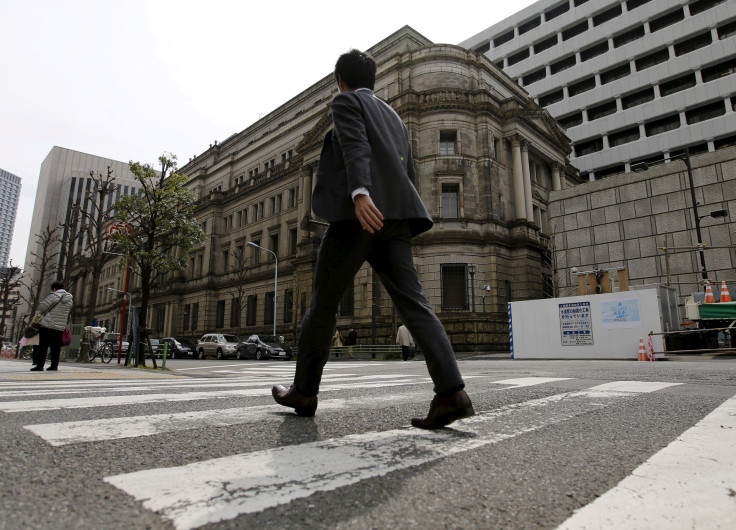BOJ Holds Off On Easing Despite Weak Inflation, Sparks Yen Spike

The Bank of Japan refrained from offering additional monetary stimulus on Thursday despite external headwinds and anemic inflation, spiking the yen to a two-year high that clouds an already darkening outlook for the economy.
While the decision came as no big surprise, it emboldened yen bulls who were already selling the dollar after the U.S. Federal Reserve held off on raising interest rates on Wednesday and became slightly less hawkish on the outlook.
BOJ Governor Haruhiko Kuroda put a brave face, stressing that the positive effects of the central bank's stimulus policies were gradually working through the economy.
"Japan's economy is likely to expand moderately as a trend," Kuroda told a news conference after the rate review.
"The underlying price trend is improving steadily so we'll see inflation accelerate toward 2 percent," he said, maintaining the BOJ's projection that the price target will be met by March 2018, the end of fiscal 2017.
The BOJ maintained its massive asset buying program at the two-day rate review that ended on Thursday, pledging to increase base money at an annual pace of 80 trillion yen ($753 billion).
It also left unchanged a 0.1 percent negative interest rate applied to some of the excess reserves financial institutions park with the central bank.
"There is nothing in recent economic indicators that would lead the BOJ to change its economic outlook now," said Norio Miyagawa, senior economist at Mizuho Securities.
"However, the rising yen will place more downward pressure on consumer prices, so I expect the BOJ to ease in July, using all three dimensions of its current policy framework."
The yen surged broadly after the BOJ's decision, hitting a 22-month high of 104.06 yen to the dollar as well as multiyear highs against the euro and sterling. The Nikkei stock average closed down 3 percent.
The BOJ moderated its view on consumer inflation to say prices may fall slightly for the time being, revealing what appears to be its waning conviction that Japan is on track to hit the ambitious goal of 2 percent price growth.
NO HELP FROM FED
A possible vote by Britain to leave the European Union was the biggest near-term concern for BOJ officials, and all the more reason to hold fire until after the June 23 referendum.
A Reuters poll showed economists have seen a much higher chance of the BOJ easing at its meeting on July 28-29, when it issues fresh quarterly growth and inflation forecasts, assuming that global markets remain stable.
The BOJ is in a bind. Despite nearly three years of aggressive money printing, inflation has ground to a halt on weak consumption and exports.
In addition, receding expectations of a near-term U.S. rate hike have dashed the BOJ's hopes of getting help from Fed policy to keep sharp yen rises at bay.
The Fed kept rates unchanged on Wednesday and signaled it still planned to raise rates twice in 2016, although it said slower economic growth would crimp the pace of monetary policy tightening in future years.
While Kuroda argues he has plenty of ammunition to ease further, some BOJ officials have openly voiced doubts on what more the central bank can deliver and whether it would be any more successful than earlier stimulus efforts.
© Copyright Thomson Reuters {{Year}}. All rights reserved.





















